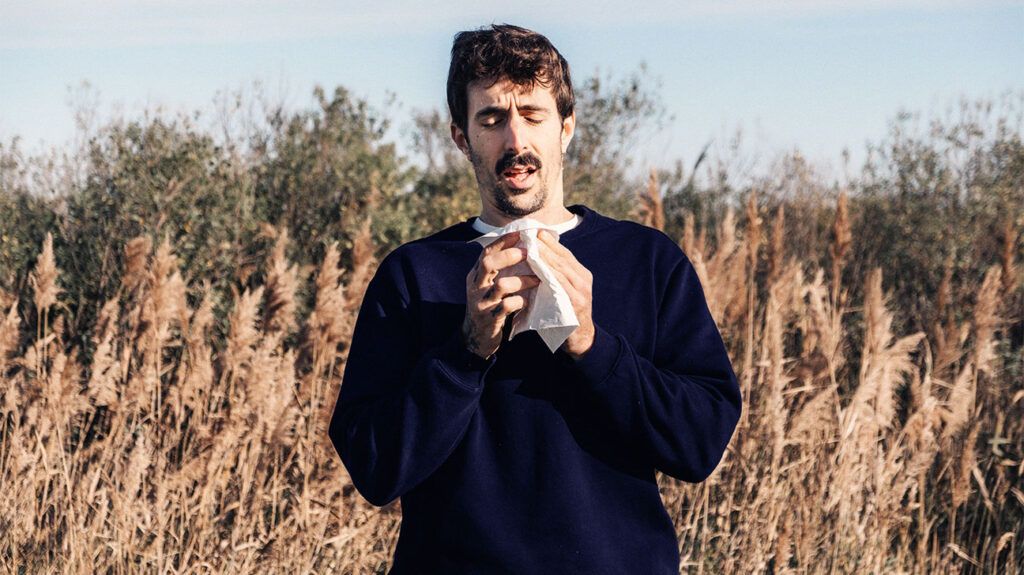Clear, bubbly phlegm may not be a problem, but in some cases, it may be a sign of an underlying health issue.
Phlegm, or sputum, is a type of mucus the respiratory tract produces. The color of phlegm can help identify certain health issues, such as infections or problems affecting the lungs.
This article looks at what clear, bubbly phlegm may mean, as well as other colors of phlegm, and when to contact a doctor.

Clear phlegm is usually normal and healthy.
However, if someone is producing large amounts of clear, frothy, or bubbly phlegm, it may indicate a health condition.
Fluid in the lungs
Clear, bubbly phlegm may be a sign of pulmonary edema, or fluid in the lungs.
It is important to monitor this condition, particularly if people have swollen hands and feet or if they take diuretics.
Bronchiectasis
Bronchiectasis is a widening of the airways in the lungs, which leads to a buildup of mucus.
The most common symptom of bronchiectasis is coughing up large amounts of clear, pale yellow, or yellow-green phlegm.
GERD
Gastroesophageal reflux disease (GERD) is chronic acid reflux, in which the stomach contents flow back up into the esophagus.
GERD is a risk factor for phlegm production. A symptom of GERD may include coughing up bubbly phlegm. Other symptoms include:
- heartburn
- acid reflux
- chest pain
- nausea
- pain or difficulty swallowing
Phlegm can come in various colors, which can indicate if an infection or health problem is present.
Phlegm color may also help identify if a health issue is getting better or worse and help determine the best course of treatment.
Yellow or green
Yellow or green mucus may indicate a bacterial infection. People with pneumonia, a lung infection, may have a cough that produces green or yellow phlegm.
Yellow-green phlegm is also a common symptom of cystic fibrosis. Cystic fibrosis causes a buildup of mucus within the lungs and digestive system.
Brown
Brown phlegm may occur due to old blood in the mucus. This may occur due to lung diseases such as:
- cystic fibrosis
- bacterial pneumonia
- bacterial bronchitis
Inhaling brown substances, such as dust or toxins, may also cause brown-colored phlegm.
Red
Red phlegm, or blood in phlegm, can occur due to:
Coughing up blood may
Black
Black mucus, or melanoptysis, may occur due to:
- pneumoconiosis, a lung disease which occurs due to breathing in certain types of dust
- cavitary lung diseases, such as lung abscess, tuberculosis, or sarcoidosis
- chronic fungal infections
- cancer which has spread to the lungs
Black phlegm may occur due to inhaling certain substances. Black phlegm can be a symptom of coal worker’s pneumoconiosis (CWP), or black lung disease.
CWP occurs due to the inhalation of coal dust and is most common in coal miners.
People can contact a doctor if they have any concerns about the color, texture, or amount of phlegm they are producing.
Any abnormal changes to phlegm may indicate an issue. It may help to track and record when coughing up phlegm starts and how long it continues.
If phlegm continues for more than a few weeks, or if other symptoms are present, it is best to contact a doctor.
If people have yellow-green, red, pink, or dark-colored phlegm, they should contact a doctor.
People will need to seek immediate help if they are coughing up blood and have symptoms of pulmonary embolism, such as:
- shortness of breath
- pain when breathing deeply
- rapid breathing
- increased heart rate
What does COPD phlegm look like?
Phlegm with COPD may be clear, but people may cough up large amounts.
During acute exacerbations of COPD, which are a sudden worsening of symptoms, phlegm
Why do I cough up clear jelly balls?
Coughing up clear jelly balls may be caused by catarrh, a buildup of mucus in the airways. This may occur due to allergies, infections such as colds or flu, pollution, or nasal polyps.
If symptoms continue for more than a few weeks, it is best to contact a doctor to find out the cause and get treatment.
Clear, bubbly phlegm may not be a sign of a problem, but large quantities of it may indicate a health issue.
If people notice any unusual changes in the amount, texture, or color of phlegm, they should consult a doctor.
People will need to contact a doctor if they have persistent green-yellow phlegm or blood in the phlegm.
